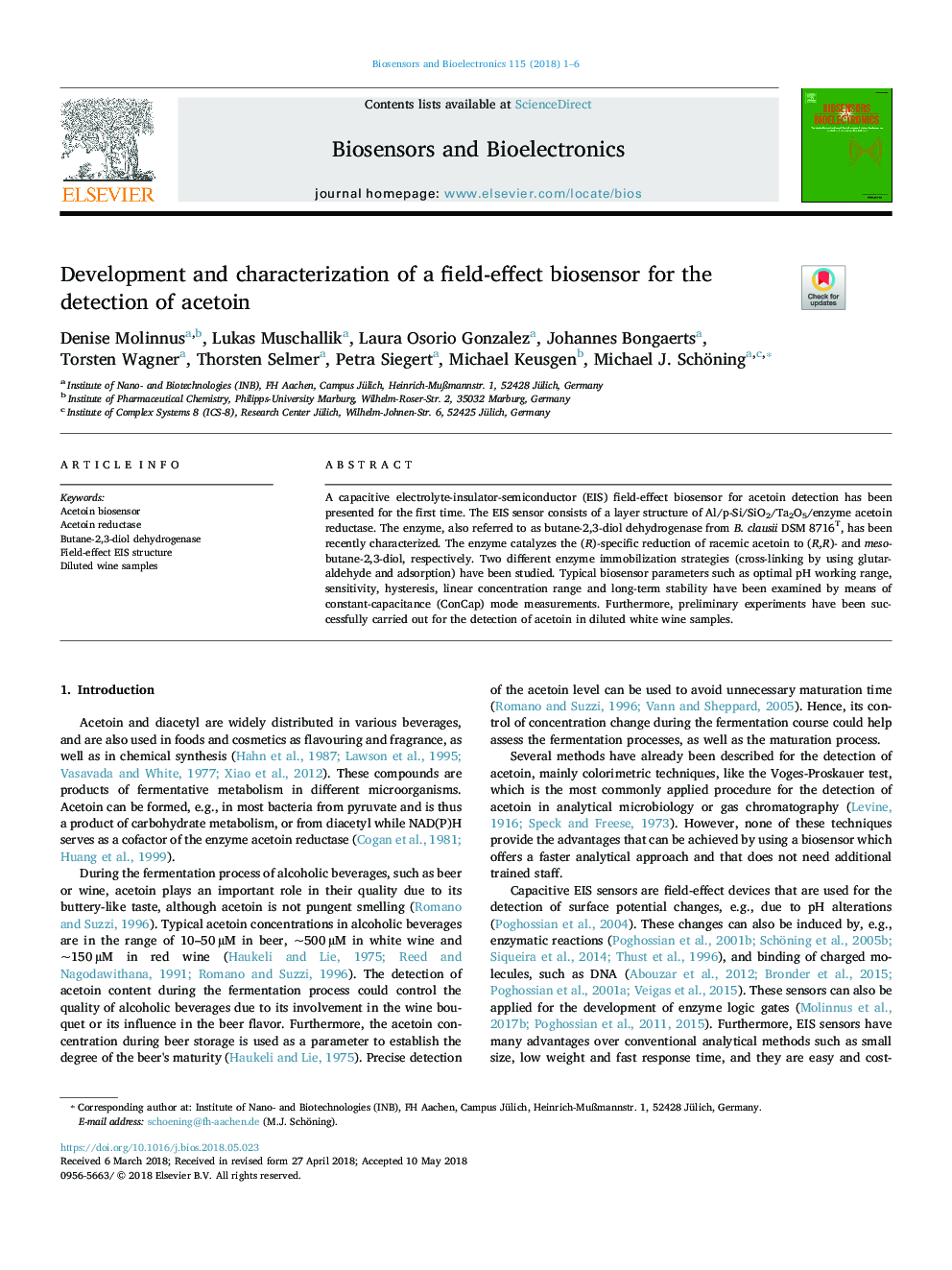| Article ID | Journal | Published Year | Pages | File Type |
|---|---|---|---|---|
| 7229145 | Biosensors and Bioelectronics | 2018 | 6 Pages |
Abstract
A capacitive electrolyte-insulator-semiconductor (EIS) field-effect biosensor for acetoin detection has been presented for the first time. The EIS sensor consists of a layer structure of Al/p-Si/SiO2/Ta2O5/enzyme acetoin reductase. The enzyme, also referred to as butane-2,3-diol dehydrogenase from B. clausii DSM 8716T, has been recently characterized. The enzyme catalyzes the (R)-specific reduction of racemic acetoin to (R,R)- and meso-butane-2,3-diol, respectively. Two different enzyme immobilization strategies (cross-linking by using glutaraldehyde and adsorption) have been studied. Typical biosensor parameters such as optimal pH working range, sensitivity, hysteresis, linear concentration range and long-term stability have been examined by means of constant-capacitance (ConCap) mode measurements. Furthermore, preliminary experiments have been successfully carried out for the detection of acetoin in diluted white wine samples.
Keywords
Related Topics
Physical Sciences and Engineering
Chemistry
Analytical Chemistry
Authors
Denise Molinnus, Lukas Muschallik, Laura Osorio Gonzalez, Johannes Bongaerts, Torsten Wagner, Thorsten Selmer, Petra Siegert, Michael Keusgen, Michael J. Schöning,
